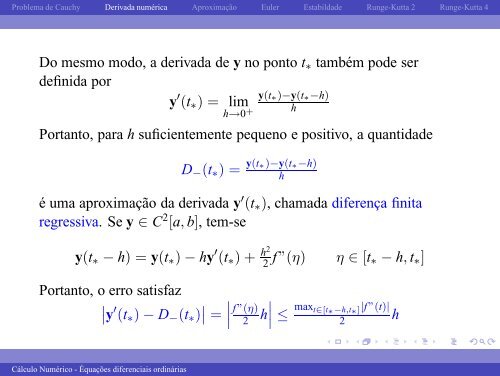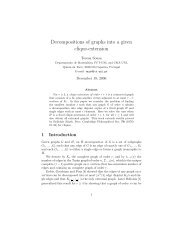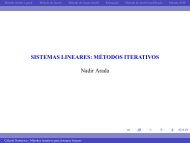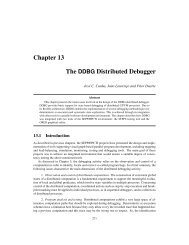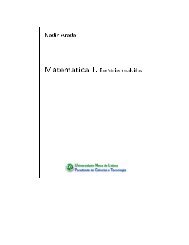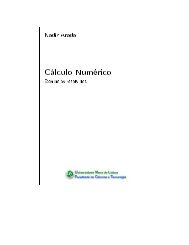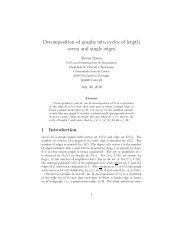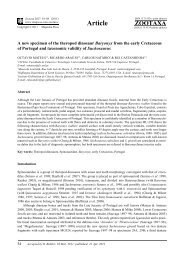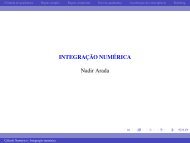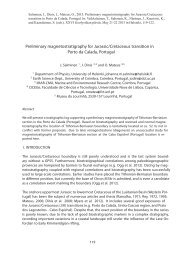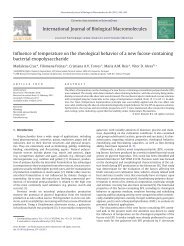Nadir Arada - (Cálculo Numérico) - Portal de docentes FCT/UNL
Nadir Arada - (Cálculo Numérico) - Portal de docentes FCT/UNL
Nadir Arada - (Cálculo Numérico) - Portal de docentes FCT/UNL
Create successful ePaper yourself
Turn your PDF publications into a flip-book with our unique Google optimized e-Paper software.
Problema <strong>de</strong> Cauchy Derivada numérica Aproximação Euler Estabilda<strong>de</strong> Runge-Kutta 2 Runge-Kutta 4<br />
Do mesmo modo, a <strong>de</strong>rivada <strong>de</strong> y no ponto t∗ também po<strong>de</strong> ser<br />
<strong>de</strong>finida por<br />
y ′ (t∗) = lim<br />
h→0 +<br />
y(t∗)−y(t∗−h)<br />
h<br />
Portanto, para h suficientemente pequeno e positivo, a quantida<strong>de</strong><br />
D−(t∗) = y(t∗)−y(t∗−h)<br />
h<br />
é uma aproximação da <strong>de</strong>rivada y ′ (t∗), chamada diferença finita<br />
regressiva. Se y ∈ C 2 [a, b], tem-se<br />
y(t∗ − h) = y(t∗) − hy ′ (t∗) + h2<br />
2 f”(η) η ∈ [t∗ − h, t∗]<br />
Portanto, o erro satisfaz<br />
<br />
′<br />
y (t∗) − D−(t∗) <br />
<br />
= f”(η)<br />
<strong>Cálculo</strong> <strong>Numérico</strong> - Équações diferenciais ordinárias<br />
2 h<br />
<br />
<br />
≤ maxt∈[t∗−h,t∗]|f”(t)| h<br />
2


